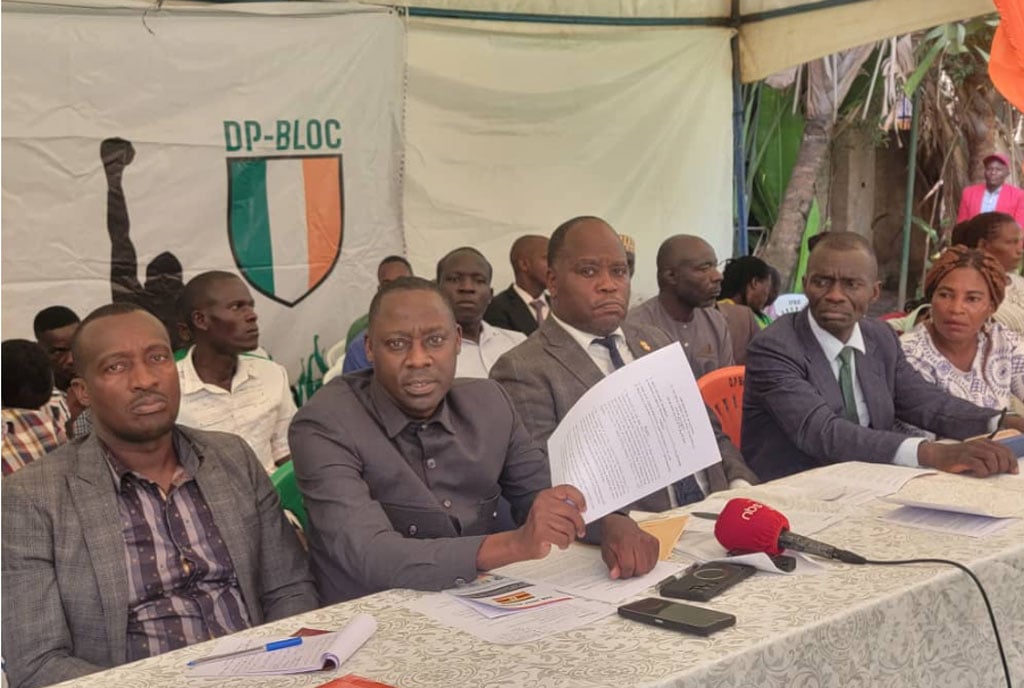Prime
How Mehta dreamt up the first sugar empire in Uganda

Below: Men arrange bags of sugar at an unidentified location in Uganda. The first sugar factory was put up by Mehta in 1924 in Lugazi. Photo by www.hipuganda.org
What you need to know:
Visionary. The development of a sugar industry in Uganda – and the industrial base it helped established owes a lot to the vision, effort – and cunning – of Mehta who set up the first sugar factory at Lugazi.
In many ways, Nanji Kalidas Mehta came to Uganda by accident. Born in Gorana, India, in 1888, the young Mehta, 14, left the sub-continent and travelled to Majunga in Madagascar where he was introduced to trading in his elder brother’s shop.
An outbreak of plague in Madagascar forced Mehta and many of the Indians on the island to return to India but was soon back in Africa against the wishes of his family – and with only 55 Rupees in his pocket.
Mehta landed in Mombasa but he had his eye on travelling farther down to South Africa where many Indians, among them Mahatma Ghandi, sought opportunity.
However, Mehta failed to get a permit to allow him travel to South Africa and ended up, instead, in Zanzibar where he worked for about 18 hours a day for Keshavji Anandji, a large Indian company, for 200 Rupees a year.
After a few years in Zanzibar, Mehta returned to Mombasa before he decided to head into the interior to Uganda. He travelled by train to Nairobi and on to Kisumu, took a boat to Entebbe and then walked to Jinja where his uncle had a shop.
Mehta would later recall his journey in his autobiography, Dream half-expressed, published in 1966. “Destiny laid its final seal,” he reminisced, “and from Mombasa I soon proceeded to Uganda, the land of nature’s bounty and eternal fertility, where I was free to do whatever I liked and launch any new enterprise that would appeal to my restless and stubborn self.”
Mehta was posted to Kamuli to run one of his uncle’s shops but he broke away a year later – testament to his restlessness and stubbornness – to set up his own shop in Kamuli.
“The day on which I first established my own shop at Kamuli was a red letter day in my life,” he later recalled. “It marked the beginning of my career as an independent businessman in East Africa. I had already learnt the native dialect and knew every merchant, big or small, personally and that helped me a lot.”
Here, he sold imported merchandise but also bought goods from the countryside, which he sold in Jinja, before expanding his business to Teso and Lango. In one trip to the area, Mehta records making a net profit of 6,000 Rupees – an amount his old job in Zanzibar would have taken him 30 years to make. Within two years, he had opened up a second shop 12 miles from Kamuli Town and had entered the cotton trade.
Mehta bought cotton in the villages of Busoga and transported it to Jinja and Kampala, returning with imported goods from Bombay and setting up more shops in Jinja and Kamuli.
Venturing into cotton brought immediate profit to Mehta who, by 1914, was making 20,000 Rupees per year, allowing him to invite more of his relatives from India to help supervise his growing empire.
In 1916, Mehta entered the world of low-scale ginning, setting up a cotton ginnery in Kamuli and another in Busembatia using machines borrowed from the British Cotton Growers Association.
He was partly forced into the ginning business by the colonial administration after it introduced the Uganda Cotton rules in 1913, which meant effectively that only ginning companies could buy cotton in the country.
He was able to pay back his loan from the association in a year, vastly expanding his access to capital, especially after he entered into partnership with Sheth Mathurdas Gokuldas, the cotton-king of Bombay, and received financing from the National Bank of India.
There is no doubt that Mehta was, at this point, destined to grow rich out of the cotton trade but it was his decision to venture into sugar that would go on to make him wealthy.
As earlier noted, Mehta had been introduced to the sugar industry during a visit to Mauritius and the shortage of sugar during World War I and the years that followed, provided a ready market for the stuff.
As he noted in his book referring to a visit back home, Mehta said: “I had already made up my mind, while in India, to establish a sugar factory at Lugazi and desired keenly to start the project as soon as I reached Africa. But to my great dismay and wonder, I knew that there was many a slip between the cup and the lip…”
There were two immediate obstacles for Mehta to overcome. The first – access to financing – was relatively easier to surmount thanks to the profit he had accrued from the cotton trade and his links to large Indian capitalists.
The bigger problem was one of land. Commercial production of sugar, required access to vast amounts of sugarcane that could only be grown on large plantations but land, although plentiful, was hard to come by.
In an attempt to protect local landowners, especially the peasant tenants from foreign speculators, the colonial administration had imposed restrictions on the sale and leasing of land to non-natives.
By 1922, Mehta had bought some land earlier leased to Allidina Visram and had planted some sugarcane in Lugazi. Two years later, he set up the first sugar-refining factory in the same area with a capacity of 24 tonnes of refined sugar per day, supplied by a plantation of 1,800 acres of sugarcane.
This was grossly inadequate for a meaningful sugar industry and Mehta had to acquire more land in order to sustain his new venture. This was particularly challenging considering that the colonial administration was encouraging peasants in Uganda to grow cotton.
“The sugar estate found it difficult to recruit local labour because the Ganda landowners were engaged in a campaign to intensify cash crop production in the area,” notes D. Ray S. Ahluwalia in his , ‘Plantations and the Politics of Sugar in Uganda.
In his effort to acquire more land he would have to demonstrate business acumen and a deep understanding of human instinct and the colonial land policies.
Nanji Kalidas Mehta
Early life: He was born on November 17, 1887 (another account cites 1888) in Gorana Village, India, and left for Africa in 1900 when he was 13 years old. Mehta married Santokben Mehta and had three sons.
First sugar factory: Mehta established the first sugar factory and estate in Uganda in Lugazi in 1924. The factory had a 48-foot mill and included a complete plant capable of producing a tonne of white sugar an hour.
His writing: In 1966, Mehta published his autobiography Dreams half expressed, where he said; “The way to success is a hard road to travel. Disappointments and failures dishearten us in the midst of struggle but a man of enterprise has to pass through the period with patience and cheerfulness till he gets his well deserved returns.”
Contribution to health and education: He founded the Mehta Group of Industries in Uganda, now having its head office in India. The Group also runs a hospital at Lugazi and various dispensaries and also runs two nursery schools, 13 primary schools and one secondary school, providing education to at least 6,000 children in Uganda.
Demise. Mehta died on August 25, 1969. Speaking about his demise, former president Milton Obote said; “... Uganda has lost a true friend and a man who made tremendous contributions in laying the foundations of our economy...”
Continues Tomorrow
[email protected]




